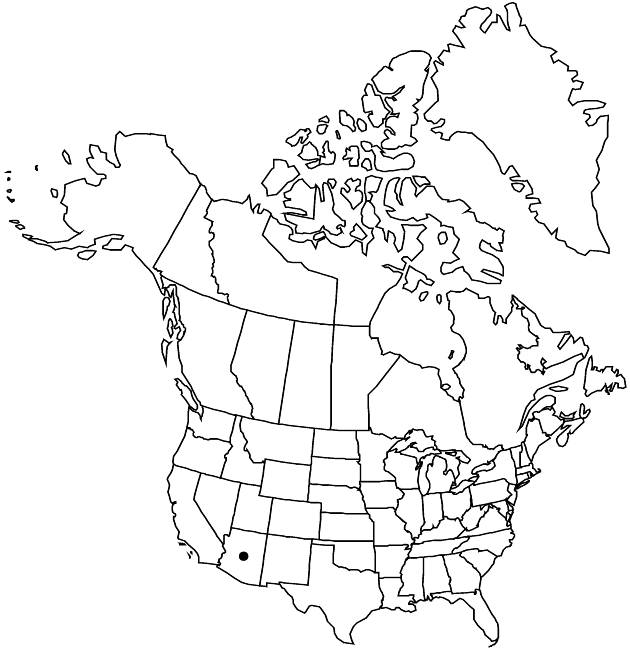Tetraneuris verdiensis
Phytologia 81: 5, fig. 1. 1996.
Perennials, 5–15+ cm. Caudices ± branched, branches notably thickened distally. Stems 1–15, erect, unbranched. Leaves all basal (new leaves tightly clustered); blades obovate or oblanceolate to linear-oblanceolate, entire, densely hairy (not strigoso-canescent), ± glanddotted. Heads 1–15 per plant, borne singly. Peduncles 4–15 cm, ± hairy. Involucres 5–9 × 6–10 mm. Outer phyllaries 8–10, 4–5 (–6) mm, margins 0–0.2 mm wide, sometimes slightly scarious, abaxial faces densely hairy. Ray-florets 0. Disc-florets 20–40; corollas yellow, 2.5–4 mm. Cypselae 2.8–4 mm; pappi of 5–6 ovate to lanceolate or obovate to oblanceolate, aristate scales 2.5–3.5 mm.
Phenology: Flowering May.
Habitat: Low gypsum hills
Elevation: ca. 1000 m
Discussion
Of conservation concern.
Tetraneuris verdiensis is found only at or near the type locality, east of Camp Verde, Yavapai County.
Selected References
None.
